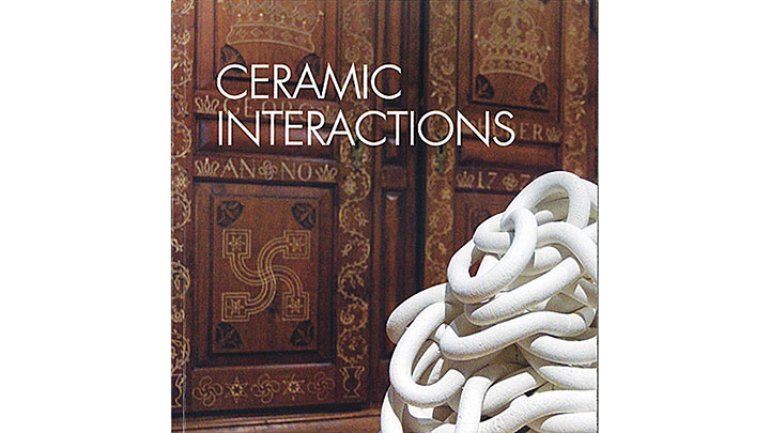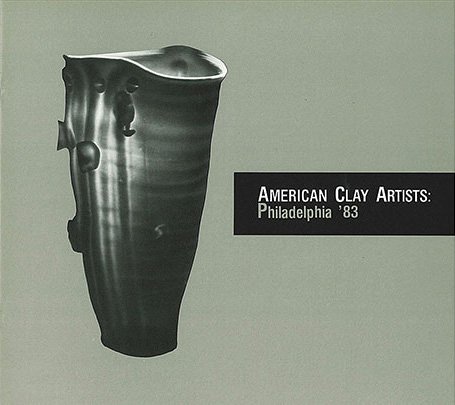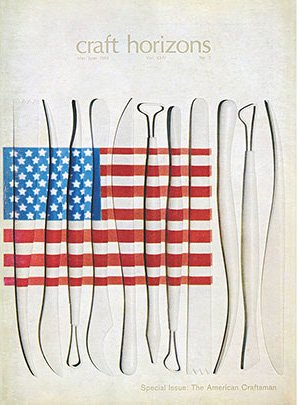Craft History’s Moment
From American Craft Inquiry: Volume 2, Issue 2
The history of craft is an essential part of any art education. It should be embraced as integral to the learning of artists working in craft mediums, art history students, and students studying fine art. As I’ve found in a decade of teaching the subject, a knowledge of craft history has a multitude of benefits. It helps artists working in craft mediums hone their aesthetic instincts, know their place in history, and understand the roots of their passion. It grounds students of fine art and art history in a perspective too often overlooked in higher education. And it helps to situate craft in the canon of art and art history.
My experience suggests that the best education in craft history combines readings and discussion, led by a knowledgeable instructor. This mix of expertise, history, and discussion is available in some universities, but in the US, I know of only a handful of schools where it is a valued and consistent aspect of the standard art curriculum.
There are reasons to be optimistic, however. Already, there are more scholars and academics focused on craft history than ever before. There are more graduate programs supporting students working in craft history. The launch of the new graduate program in critical and historical studies at Warren Wilson College is particularly encouraging. We are at a turning point where we can reach critical mass by promoting craft history in art education. The time has come.
Why are people still making things with their hands when modern industry has removed most of the need to do so? What social and political dynamics led to the rise of modern studio craft, beginning with the Industrial Revolution? These essential, provocative, and, I’d argue, increasingly relevant questions can be answered by craft history.
For 10 years, I taught the history of modern craft and design to undergraduate and graduate studio art students at Tyler School of Art and other Philadelphia-area colleges. That experience gave me insight into what students want to learn and what inspires them. About 80 percent of my students were majoring in a craft medium – usually ceramics, metal, fiber, or glass. (There is no wood program at Tyler.) The two semesters of my class covered two eras; the first encompassed the period of 1850 to 1915, the second, 1915 to the present. We began with the latter half of the 19th-century, when the Industrial Revolution was in its embryonic stages and began to materially change the lives of makers in England, elsewhere in Europe, and the young United States. Each term, more students enrolled than I could accommodate in the class; in many cases, they were eager to learn the histories of their own mediums. The course provided the only opportunity for some students to discuss issues of craft with their fellows in other disciplines, including craft-based painting and sculpture, graphic design, and art history.
We began the first semester with what seemed like a simple exercise to define our terms – “history,” “modern,” “craft,” and “design” – that inevitably blossomed into a wonderful discussion of the different meanings of the words in various corners of the art world. Even quiet students participated, their ideas respected and explored by the whole class.
As we began to examine the social and political ideas of artists in the middle of the 19th-century, I was privileged to witness students grow excited about parallels they saw between their own interests and the intentions of the artists of the Arts and Crafts movement. History became relevant to them. One sophomore, who’d returned for the second semester of class with a healthy beard, proudly told me he was trying to emulate William Morris. Many students said they had never enjoyed art history classes before; they didn’t see their own art practice reflected in the course material. But here they were, enthusiastic about what they were learning.
Each class was part slide lecture and part discussion of assigned readings. During the discussions, these young art students became comfortable debating issues such as art vs. craft, the hierarchy of the arts, traditional methods vs. digital fabrication, how craft evolved in response to the modern social and political climate, and much more. Some craft veterans may be weary of these topics, but art and art history students need to explore their views within a respectful and supportive environment. Students of craft are often disconnected from one another in medium silos, to say nothing of the divisions among people in the rest of the art world. Students working with different craft mediums, as well as those studying painting, sculpture, and graphic design, inevitably approached the subject matter in different ways. Those varying perspectives were valuable and unifying.
Students who pursue craft generally have at least an inkling that they are uncomfortable with our ultra-consumerist society. Ceramics offers a particularly poignant alternative to our disposable, materialist culture. It offers a direct connection to the earth and entails the making of objects used for that most essential human need – feeding ourselves. Ceramics is a window into history; it stands as a symbol of the connection between humans today and our ancestors. Each of the craft mediums has a specialized value as a skill and a lens. There is something to be learned about the current problems in society through the study of how and why people have created things for use and beauty in the past.
Many of today’s young adults have grown up fearful about the state of our planet and the detrimental effect of human activity. They are continually being told that, during their lifetimes, the planet may not be able to sustain life as we currently live it. Environmental concerns are just one of the social and political issues the youngest generations have had to grapple with; there’s also violence in the form of terrorism, school shootings, sexual violence, violence against people of color and immigrants, racism, sexism, and discrimination against LGBTQ people and people with disabilities. The list can seem endless.
Creating things with their own hands and experiencing the comfort of materiality, students learn, is a way to resist and repair the ills of the world – a practice that is reinforced when they learn that craft has been tied to social activism since its inception. The birth of a certain conception of craft in the 19th-century helped young people of that time find refuge from societal problems – young people about the same age as many college students studying craft mediums today. This knowledge can be deeply empowering.
History is not only an end in itself, but also a means to help students think critically about today’s material culture, which makes the subject relevant. Students realize that there was a time before the way things are now; their intellectual horizons expand. That’s the advantage of starting with the mid-19th-century as a model for social dissent and discourse through craft: Students discover that venerated thinkers and artists such as William Morris, Jane Burden, and other Arts and Crafts artists and thinkers began as young people who banded together to make art together. They didn’t see their interests reflected in the established institutions, so they created their own, not unlike the artist collectives that thrive today. The story is interesting to craft students now, and it’s more powerful because it is grounded in the particulars of the past. Craft, then and now, is a platform for social activism.
It is easy to draw a straight line from the Pre-Raphaelite manifesto, which declared that all arts are equal and that industrialization is a threat to the working class, to the present day, when craft still struggles for equality in the art world, and technology continues to weaken our connection to the handmade. The fact that the same issues existed 150 years ago inspires students to address them today.
We also covered the world’s fairs that began with the 1851 Crystal Palace Exhibition in London and continued with many more, including the 1876 Centennial Exhibition in Philadelphia and the 1900 Paris Exposition. These sprawling events were touted as the first international activities that engaged countries from around the world in a peaceful pursuit.
The fairs served many purposes, including as models for department stores and, later, shopping malls. Learning that modern shopping is a social construct tied to the Industrial Revolution, rather than a universal or eternal human pursuit, allows young minds to see that there are alternatives to living as we do today. There was life before shopping – and before other modern practices we may accept without thinking. Another way of life is possible; change is possible.
Another revelation from craft history is the birth of planned obsolescence in the early 20th-century. Those of us born after 1925 tend to accept as foregone conclusions the seasonal design changes in the cars and clothing we are prodded to buy, along with the 10-year lifespan of the average water heater. Stopping to think about how and when these obsolescence norms were established reveals them to students as a veneer of inevitability over a core of consumerist customs. Understanding planned obsolescence as an artificial overlay allows students to peer beneath and imagine a new way.
The course also examined the Great Depression, the Works Progress Administration, World War II, the post-war boom, the back-to-the-land movement of the 1960s, and other periods. Studying craft history, students can learn to think like those who lived before technology, particularly digital technology, dominated the world as it does today. They can achieve a fuller, more informed artistic vision and voice.
Students finished the history courses feeling empowered by a greater historical knowledge and affirmed in their choice to pursue craft-based art. Adam Ledford was pursuing ceramics at Tyler when, as a sophomore, he became one of the star students in the class. He was captivated by the importance of historical clay works. He was awarded a Windgate Fellowship and used the money to travel and explore ceramics in museum collections around the world. He credits the knowledge he gained from the class, as well as first-hand observation of artwork in those museums, with shaping the sophisticated sculpture he makes today.
Educating young artists about the history of their own mediums, and craft as a whole, hones their aesthetic sensibilities through inspiring work from previous eras, and it nurtures them by placing them within a community that echoes back through time. Learning about the past allows young artists to ground themselves in the present and to create art that will push the field forward. The history of craft must therefore be valued and made accessible to students in all art history and studio craft education programs, as well as through educational institutions such as the American Craft Council and the Clay Studio in Philadelphia, where I now work. Important aspects of the history of craft can be researched through the archives of the American Craft Council; these and other archives can serve as a foundation to help create an inclusive and living modern craft canon.
Tension and an adversarial spirit helped to birth the movement. Initially, craft and industry were pitted against each other; later, the polarities were craft and art. Tension is also part of what feeds the energy of people making art with craft materials in our post-industrial society. Let’s celebrate the values of craft as a special category under the larger art umbrella, just as we value that which distinguishes installation art, video art, performance art, academic painting, and abstract painting. Establishing a canonical structure for craft history will go a long way toward promoting its importance.
Craft is artful problem solving. The expertise to master a material, the skill and the knowledge to make a highly functional and beautiful object, remains exceedingly relevant in these times. With the dominance of digital technology, our society is increasingly disengaged from the material world. Those artists who can dream, innovate, build, design, and make objects that address human needs will shape the future. We must teach them about their heritage in artful problem solving and empower them as new leaders in society.
Building a Craft Canon
How can we anchor craft history in art education? First, we need to make the most of the resources that already exist. There is a comprehensive scholarship in the 2010 textbook Makers: A History of American Studio Craft, accompanied by a website and funded by the Center for Craft, Creativity & Design. And there is a growing number of other scholars in the field, in large part because of the pioneering work of curators and scholars recognized by major museums. In 2005, the Philadelphia Museum of Art became the first major US encyclopedic museum to hire a curator specifically for contemporary craft when Elisabeth Agro became the Nancy L. McNeil curator of American decorative arts and craft after 1850. Subsequently, the Museum of Fine Arts, Boston, hired Emily Zilber (now editor of Metalsmith and Metalsmith Tech magazines) as the Ronald C. and Anita L. Wornick curator of contemporary decorative arts. There are master’s degree craft history programs at the Bard Graduate Center, Cooper Hewitt, the George Washington University/Corcoran, George Mason University, and, now, Warren Wilson College. Another important entity for the support of craft scholarship is the Critical Craft Forum, co-founded by Namita Gupta Wiggers and Elisabeth Agro, and the history-based sessions they’ve offered at College Art Association conferences.
There are also rich archives to aid in independent research, a key element in history education. These include a multitude of oral histories of craft artists in the Nanette L. Laitman Documentation Project at the Smithsonian Archives of American Art. There are also as-yet undigitized archives at numerous museums and arts organizations such as the Clay Studio. The most exhaustive resource is the online archive of the American Craft Council, which contains primary source documents of studio craft dating back to the 1930s. The ACC archives offer conference proceedings beginning in the 1940s, exhibition catalogues, ACC newsletters, and issues of Craft Horizons, published from 1941 to 1979, all available for digital browsing at a time when library stacks are increasingly unavailable to library patrons. The Clay Studio is actively working to digitize archival material to allow craft scholars to access important exhibition and artist information dating back to 1974. Small to mid-sized craft organizations across the country can and should add their materials to the online resources available. A craft resource web page at craftcouncil.org could then be a starting point to explore all of the rich histories.
Recently, the American Craft Council added schools offering classes in craft history and related subjects to their “Schools with Craft Workshops and Courses” resource page. This list is not complete; we need help from readers, students, and teachers who can supply the most up-to-date information. Furthermore, the ACC has offered to host an affinity group of craft history educators, who can share their syllabi and come together to discuss next steps. Ultimately, this group could help become a clearinghouse of information, offering a constantly updated, ACC-approved core curriculum, an ongoing support and discussion group, and image sharing. Perhaps the group could convene at the October 2019 ACC conference in Philadelphia and subsequently present findings to the rest of the community, making the curriculum an inclusive and democratic process. As a community, we can strengthen our growing field and nurture the spirit of craft that was born almost 200 years ago.






